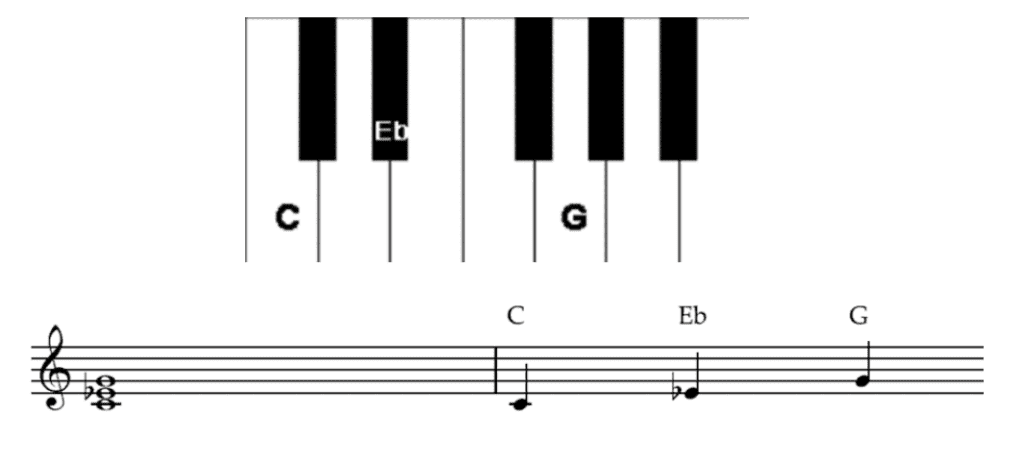Are you a piano player and are in the midst of learning all the chords? Learning piano can be challenging, but it is achievable with consistent practice and dedication. The level of difficulty can vary depending on the individual’s natural abilities, previous musical experience, and the complexity of the music they want to play. Today, we will be discussing many C minor chord piano examples and we hope you are ready. Let’s go!
What Is The C Minor Chord Piano?
The C minor chord on piano is a three-note chord consisting of the notes C, E-flat, and G. It is formed by lowering the third note of the C major chord by a half step, resulting in a minor third interval between the first and third notes of the chord.
The C minor chord has a dark and melancholic sound due to the minor third interval, and is commonly used in a variety of musical genres, including classical, jazz, and pop music.
It can be played in various inversions and voicings on the piano, and is often used in chord progressions to create tension and resolution.
C Minor Chord Piano
We thought it would be helpful to share with you some images of the chord, before starting to play it.



How to Play the C Minor Chord on Piano and Keyboard Cm, Cmin
Now, you know what the chords look like, why not give it a try on the piano. This video below will give you the tips and tricks to nail the chord in a fun and easy way.
Songs That Use The C Minor Chord On Piano
You might be interested to know that C minor is one of the most well-used chords in the history of Western music. We are also going to share with you some well known songs that have used this particular chord.
Beethoven – 5th Symphony
Survivor – ‘Eye of the Tiger
Chopin’s Prélude Op. 28, No. 20 (“Funeral March”)
Adele – ‘Rollin’ in the Deep
C Minor Piano Chord Finger Positions
The finger positions for a C minor chord are exactly the same as a C major chord. The basic C minor piano chord finger positions are:
– C: 1st finger on C (1st note in C minor scale), 2nd finger on E-flat (3rd note in C minor scale), and 5th finger on G (5th note in C minor scale).
– Cm (first inversion): 1st finger on E-flat, 2nd finger on G, and 5th finger on C.
– Cm (second inversion): 1st finger on G, 2nd finger on C, and 5th finger on E-flat.
C Minor Chord Inversions
Chord inversions are different ways of rearranging the notes of a chord so that a different note serves as the lowest note or bass note.
The following C minor chord inversions are as follows;
1st inversion: Cm/Eb
2nd inversion: Cm/G
3rd inversion: Cm/Ab
Once you have got your head around the basics of the chord inversion of this chord, other chords will appear easy to play. Remember, the inversion of a chord is always determined by its lowest note.



C Minor Chord Piano Progressions
Chord piano progressions refer to a sequence of chords played on a piano or keyboard in a particular order to create a harmonic structure for a piece of music. This progression serves as the foundation for melodies, harmonies, and improvisation in various genres of music.
Some common C minor chord piano progressions include:
1. Cm – G7 – Ab – Eb
2. Cm – Fm – G7 – Ab
3. Cm – Bb – Ab – G7
4. Cm – G7 – Fm – Eb
5. Cm – G7 – Bb – Ab
Summary – C Minor Chord Piano
Learning the C minor chord on piano is relatively easy as it only requires three fingers and is a common chord used in many songs. However, it may take some practice to get the finger placement and sound just right. So you know what you need to do, practice as much as you can to improve. It only takes 30 minutes every day for 3 months or follow the 20-hour rule. This suggests that it takes approximately 20 hours of deliberate and focused practice to become reasonably competent in a new skill. While 20 hours may not make you an expert, it’s enough to become proficient and confident in the basics of a new skill.










